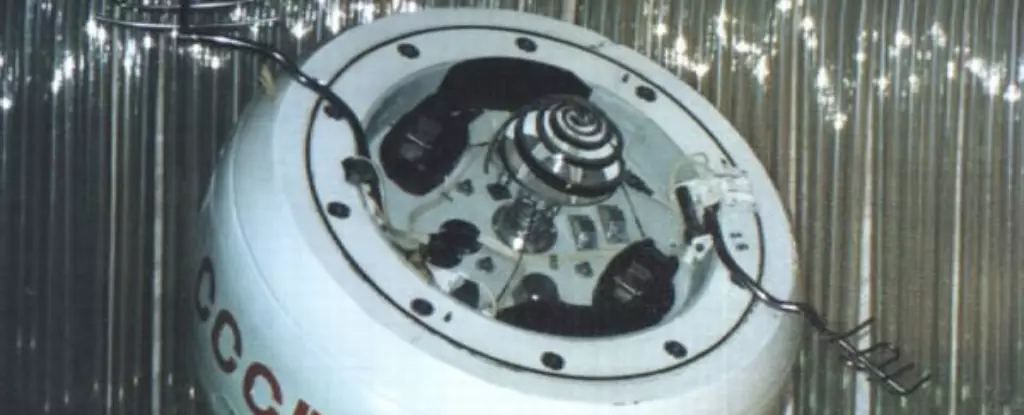Launched on March 31, 1972, Kosmos-482 stands as a relic of its time—a product of the Cold War’s intense space race between the superpowers. Conceived during a time of secrecy and competition, this mission has witnessed over five decades of history from its high-altitude perch in Earth’s orbit. Now, it is on a destined trajectory that will culminate in its fiery reentry into the atmosphere, marking an end to its unparalleled longevity in the cosmos. As we prepare to say goodbye to Kosmos-482, it’s a poignant reminder of both the remarkable achievements and the complicated legacy of mankind’s ventures into space.
Mission Ambiguities and Unforeseen Fates
Originally intended for a grand mission toward Venus, Kosmos-482 encountered a significant setback almost immediately after its launch. As many enthusiasts of space exploration know, the Soviet space program was famously reticent about its failures. The launch was shrouded in mystery—what exactly went wrong? The primary hypothesis revolves around a timer malfunction that left the spacecraft stranded in low Earth orbit. Onlookers witnessed pieces of its payload reentering the atmosphere just days after the launch, a reminder of what could have been—a fully realized scientific mission and an exploration of another planet.
This ambiguity surrounding Kosmos-482 reflects a broader theme in the history of space exploration, especially during the Cold War. Failures often went unacknowledged, swept under the rug in a climate dominated by competition and secrecy. As scholars and enthusiasts analyze missions like Kosmos-482, they reveal how such failures were not just technological missteps but illustrative of the political pressures of the time.
The Science of Reentry: Risks and Revelations
With the impending reentry forecast for early next month, satellite observers like Marco Langbroek speculate about the risks and outcomes. Even though the descent is uncontrolled, experts assert that the risk to those on the ground is minimal. Kosmos-482 weighs approximately 500 kilograms (1,100 pounds), a size that draws comparisons to larger satellites that have reentered safely in the past. This opened up intriguing discussions regarding whether the lander, built robustly for Venusian conditions, might withstand the heat of reentry into Earth’s atmosphere. The uncertainties associated with such events make it a captivating spectacle for scientists and historians alike.
Moreover, the reentry trajectory of Kosmos-482—from pole to pole—invokes excitement among sky watchers and astronomy enthusiasts who find joy in witnessing a piece of history grace the sky one last time. As we approach the date, calculated predictions will sharpen, providing clearer forecasts on the exact timing and visibility of this celestial event. Observing the reentry won’t just be an adventure; it also serves as a microcosm of the complexities of managing our increasingly populated orbits.
The Expanding Problem of Space Debris
As Kosmos-482 prepares for its final descent, it’s hard to ignore the growing issue of space junk cluttering Earth’s orbit. This situation poses significant challenges for future missions and ongoing satellite operations. The rise of mega-constellations—such as SpaceX’s Starlink, China’s satellite initiatives, and Amazon’s Kuiper Project—adds another layer to an already complex problem. The sheer number of objects circling the planet makes space a crowded and increasingly hazardous environment for newer missions.
The butterfly effect of Kosmos-482’s journey and its ultimate reentry symbolizes the fragility of our endeavors in space. Each failed mission or piece of debris serves as a cautionary tale for nations and private companies that dream of expanding humanity’s reach into the cosmos. As we strive for greater achievements in space exploration, a responsible approach to debris mitigation and sustainable practices becomes paramount.
A Legacy Revisited Through Light
As Kosmos-482 unceremoniously reenters the atmosphere, it serves as an emblem of what once was—a testament to human curiosity and ambition. It invites us to reflect on our past while considering our future. In an age where we push the envelope further than ever in space exploration, we owe it to the legacy of missions like Kosmos-482 to honor their memory while forging paths that ensure the safety and sustainability of our celestial pursuits.
Indeed, watching Kosmos-482’s last fiery dance across the sky is not just an opportunity to witness history; it’s an enduring reminder of our collective journey—one fraught with the ambition, challenges, and aspirations that define our species. As it streaks through the night, let it inspire a renewed commitment to the wonders of space, urging us to tread lightly wherever we may venture next.


Leave a Reply